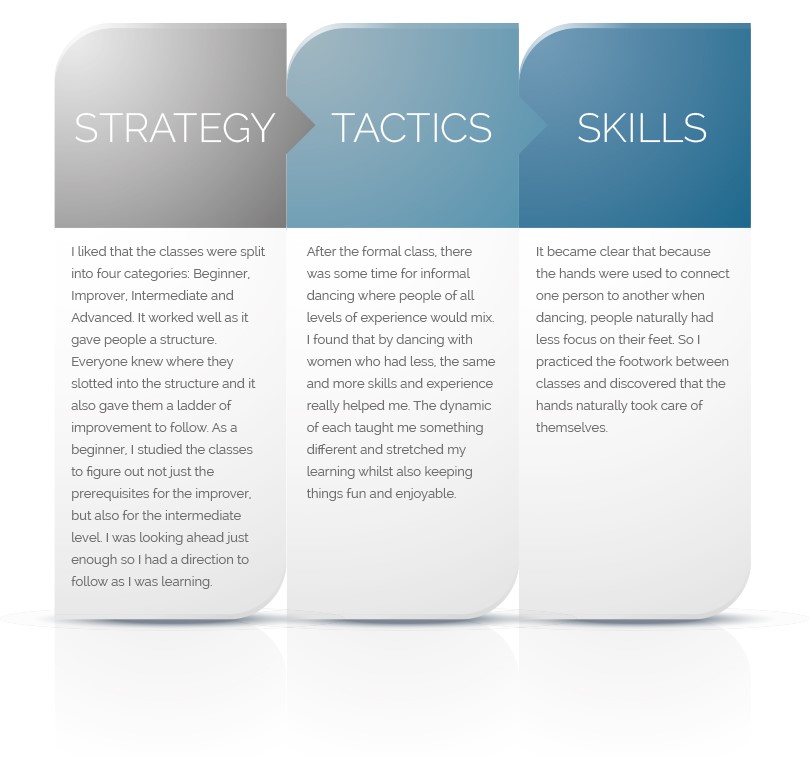“If you can’t explain it to a six year old, you don’t understand it yourself.”
It’s a bit strange that there is very little instruction in any of our formal schooling about the fundamentals of how the human mind works. We ‘learn how to learn’ more by chance rather than by consciously applying ourselves to it and that seems like an ineffective approach to me. It seems that a large percentage of what is taught is taught that way because it has always been done that way. A full understanding of how we best learn is not part of the picture. Could ‘learning how to learn’ at any stage of life be extremely useful? I believe this to be the case.
This is the first of four articles aimed less at providing new information about learning and more at reminding ourselves about what we intuitively know already when we tap into it. (This less and more dynamic which can be called leverage will be covered in depth in further articles).
We will commence with a perspective that the ancient Daoists of China discovered and applied thousands of years ago. It enabled them to develop complex and fundamental understandings of the science of the mind and body. In recent decades quantum physics is now verifying the teachings of these early scientists.
One of the simplest Daoist principles is called ‘Separate and Combine’
Whenever a person learns something, a level of their mind that is mostly subconscious breaks down the new information (separate) and then integrates it back into what they already know (combine). There may be some conscious learning occurring as well but it’s not as obvious once a person leaves the infant stage of development. A certain amount of learning will occur during the day but there is also an amount that will occur during the sleeping phases especially during REM (Rapid Eye Movement). In essence, sense is being made of what was learned; the new learnings are being integrated whilst outdated data is being cleared out.
Think of your mind as a computer for a moment. The daily updates work much better when the trash facility cleans up and keeps the memory banks clear for the most useful tasks. So when you go to sleep, you are in effect pushing a button like this:
![]()
The separate and combine idea is very useful when a person wants to enhance an area of their life, such as learning a subject at school, a job-related skill, or something to do with a hobby. Whenever a person researches a topic, they in effect apply a separate and combine process as they integrate the new information they discover.
An example in action…
An example of my own was learning salsa dancing. I had moved to Dublin for a work assignment and, not knowing many people, I looked for ways to socialise and meet new friends. I only had time to attend one class a week and knew that generally speaking two nights a week was needed to really advance.
I knew that many sportspeople use this breakdown:
1. Strategy
2. Tactics
3. Skills
I considered that dancing might not be so different to sport in terms of learning so I worked with the idea to see if it could help me make the best progress I could with my limited available time.
I was already starting to apply the ‘separate’ part of ‘separate and combine’. I was breaking things down into elements that I could focus on. Examples of each include:

When strategy, skills and tactics were ‘combined’, I found myself moving through the beginner and improver stages incredibly swiftly whilst still enjoying what each class brought me.
You’ll find the separate and combine dynamic everywhere once you start looking; it’s just that you may not have been consciously aware of it yet.
Consciously applying separate and combine can make huge improvements in what we learn in a specific period of time.
Conscious application…
So with this information in mind, you might want to think of a problem/obstacle/challenge in your own life that could benefit from a change in mind-set. You don’t need to do anything about it right now other than simply noting where you are with it.
If however, you would like to maximise your benefits, I recommend two considerations:
1. Pick something a ‘mid-sized problem’ and not one that’s going to be a struggle at this stage.
2. On a scale of 1 to 10, note how much resistance that problem brings up right now. One being hardly any and 10 being a brick wall. If you have chosen a mid-sized problem, you will likely be somewhere in the 4 to 7 range. Your choice completely of course!
As this series progresses look back at that situation and apply what you’ve learned from the article you’re reading. Bit by bit, you will consciously apply separate and combine for yourself and will learn how helpful it can be in making real improvements to any part of your life.
Looking forward…
In Articles Two and Three we will look in more detail at Separate and Combine as individual elements. Obviously, this in itself is using the ‘Separate’ dynamic.
In Article Four, we will look at an example of Separate and Combine which is perhaps the most valuable one that I have discovered so far. It is known as the Ebbinghaus Effect.
Summary points
- Learning how to learn seems so obviously fundamental.
- ‘Separate and combine’ is a very simple idea yet offers a doorway to tap into the way we naturally learn.
- When we learn, we are in effect updating what we already know via an integration process.
